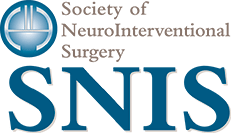Arizona’s Severe Stroke Crisis: Who Gets to Survive?
From Arizona Capitol Times:
In the span of one year, two next-door neighbors have a severe stroke. One receives neuroendovascular surgery to remove the blood clot: His life is saved. One is taken to a hospital that is not equipped for that type of life-saving surgery, and must be transferred to one that is: After such a long delay, his life is lost.
Could such a dichotomy in treatment and outcome really be happening in the U.S.? It’s happening in Arizona.
In the Grand Canyon state alone, 81,700 people experienced a stroke in 2010, resulting in more than $750 million in health care costs, 319,000 days of missed work, and the incalculable impact on families. Despite these numbers, Arizona still has better stroke outcomes than other states because of the collaborative relationship shared by the medical community and the government, and their joint commitment to improving stroke systems of care. But we can do even better.
The deadliest type of ischemic stroke is caused by an emergent large vessel occlusion (ELVO) — which cuts off blood flow to the brain from a major artery and often results in death or long-term disability. For each minute that a clot denies blood to the brain, 2 million brain cells die.
Proper treatment of this time-sensitive condition begins with trained first responders who can identify severe stroke and bring the patient to the facility best-equipped to treat it. Just 90 minutes of delayed treatment translates roughly to a 30 to 40 percent decrease in a patient’s chance for a positive outcome.
For these patients, quick and proper triage in the field is the difference between life and death. When patients do survive, they face a life of disability — sometimes unable to walk, perform basic tasks, or even speak.
But there is hope.
A minimally invasive stroke surgery, known as neuroendovascular surgery, has emerged as an effective means of treating ELVO patients. When an ELVO patient is properly triaged and transported to a facility that is equipped to perform this type of surgery, the odds of survival and returning to a normal life increase dramatically. Patients who receive this groundbreaking treatment are twice as likely to be independent just 3 months after a stroke than those who do not. In the long run, patients who receive neuroendovascular surgery increase their life expectancy by 5 years more than those who do not.
As of this writing, less than 10 percent of severe stroke patients in Arizona and across the country are reaching the facilities that are best equipped to not only save their lives, but improve their quality of life and minimize the effect of the stroke on their families.
We have a unique opportunity to change that.
Arizona Department of Health Services recently released a draft of proposed updates to the rules that govern stroke care in our state. With this release, DHS opened a comment period giving Arizonans the opportunity to offer their opinions related to improve our state’s system of stroke care. You can make your voice heard by leaving a comment on the DHS website before the public comment period closes on January 22, 2017.
In order to achieve the best possible outcomes for all patients, we need to ask our leaders for a stroke care system that helps first responders make the right decisions when it comes to patients with severe strokes resulting from ELVO.
We already have a model to follow: Consider trauma care. First responders are trained to recognize the nature and severity of trauma, and are required by law to transport the patient to the facility best equipped to provide appropriate care. Every day, countless trauma victims are saved because of a system of care that makes getting patients to the right hospital a priority.
Treating severe stroke — which is really a trauma of the brain — should not be any different. We need first responders to be trained in assessing the severity of a stroke in the field and be required to bring severe stroke patients directly to a facility that is best equipped to treat them. This is important, because one-in-three stroke patients become ineligible for neuroendovascular surgery when he or she is taken to a hospital not prepared to treat them, and then transferred to one that is neuroendovascular-ready.
Let’s not waste this chance to make sure that severe stroke patients are quickly diagnosed and receive the best available treatment.
Felipe C. Albuquerque, MD, is the Evie and Lou Grubb Neurovascular Research Chair and Director of Endovascular Neurosurgery at the Barrow Neurological Institute.

